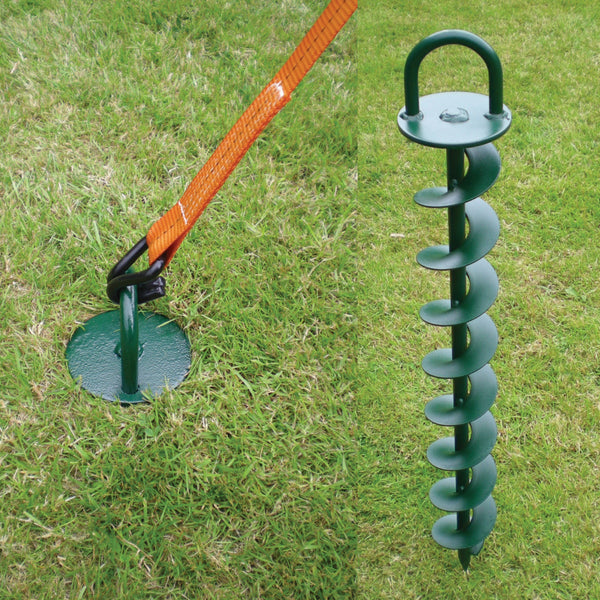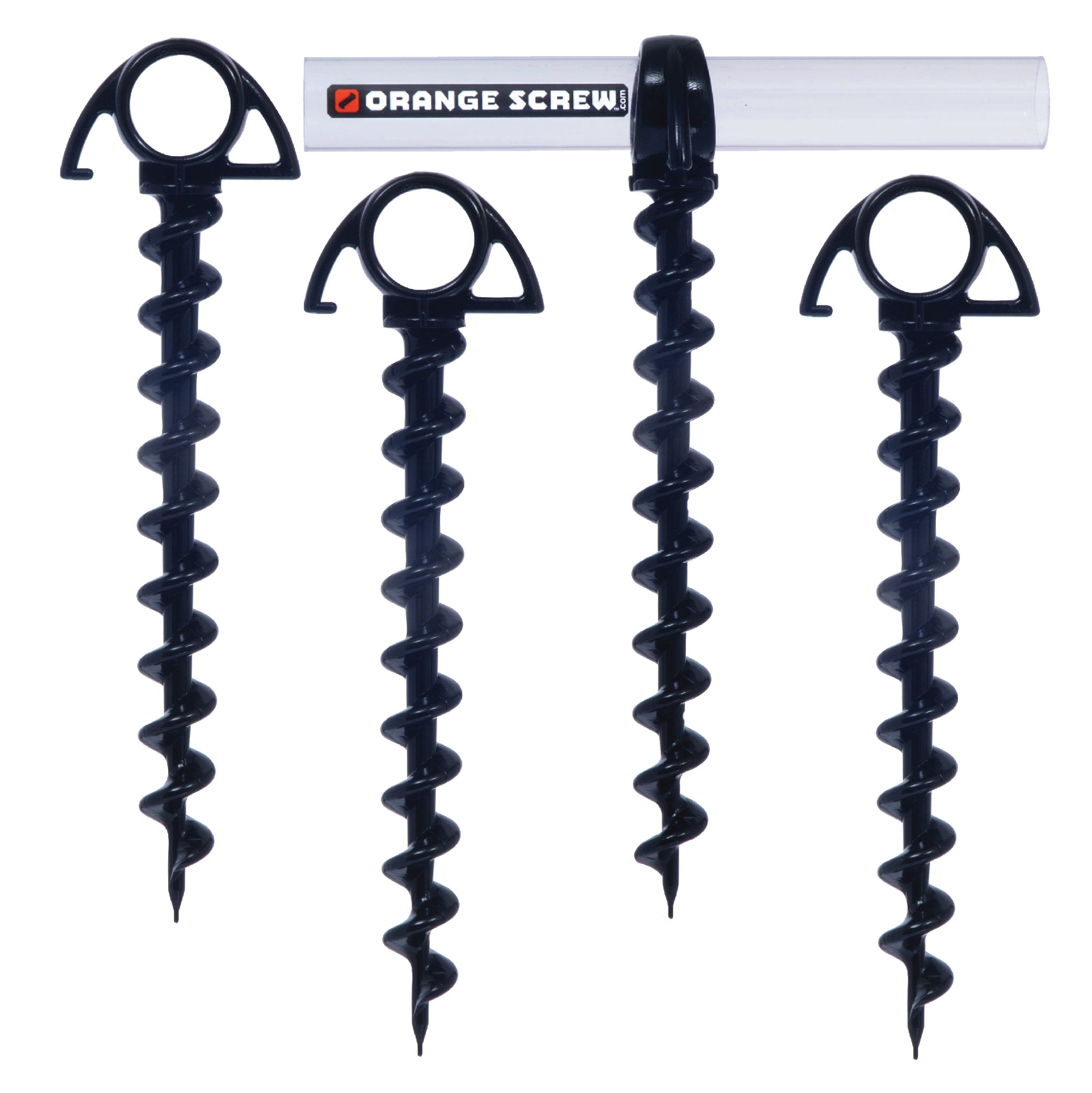Understanding the Different Types of Ground Anchor Systems for Various Uses
Understanding the Different Types of Ground Anchor Systems for Various Uses
Blog Article
Understand Why Ground Support Is Crucial for Safety And Security and Resilience
Ground anchors are an essential element in building, giving vital support and security for different frameworks. Their ability to transfer lots efficiently to the ground not just boosts structural stability but likewise plays a considerable duty in mitigating threats related to environmental aspects, such as unpredictable soil and seismic activity. Understanding the different types and applications of ground supports can illuminate their crucial role in making certain security and resilience. However, the intricacies of their installment and the advantages they provide might not be right away obvious, triggering additional exploration into this important topic.
Duty of Ground Supports in Construction
Ground supports play a pivotal role in building by providing essential support and stability to structures. These tools are made to move tons from a framework to the ground, guaranteeing that structures and other facilities continue to be secure under various conditions. Ground anchors are especially important in situations where dirt conditions are unpredictable or where there is a threat of side movement, such as on slopes or near bodies of water.
The installation of ground supports entails drilling right into the planet to reach stable soil or bedrock, where the supports can be firmly secured. This process not just improves the architectural integrity of a job but also mitigates the risks associated with soil erosion and moving. Additionally, ground supports can be employed in short-lived structures, such as construction sites, where they offer necessary stabilization during the building procedure.
Ground anchors likewise add to the durability and longevity of structures by decreasing the likelihood of settlement and failure. Ground Anchor. By efficiently distributing and handling tons, these important parts are important in maintaining safety and security standards and ensuring the reliability of various building projects. Overall, the significance of ground anchors in construction can not be overemphasized, as they are indispensable to successful engineering methods
Sorts Of Ground Anchors


While countless types of ground anchors exist, each offers details applications and conditions within building and construction jobs. One of the most typical kinds consist of mechanical anchors, grouted supports, and driven supports.
Mechanical anchors, such as growth supports, utilize a mechanical action to secure the anchor within the substratum - Ground Anchor. These are commonly used in light-weight applications, like safeguarding components to stonework or concrete
Grouted supports, on the various other hand, include piercing a hole, positioning a steel pole or cord, and after that loading the annular space with grout. This technique is suitable for high-load circumstances, providing enhanced stability and resistance to dynamic forces often found in heavy construction.
Driven supports are generally mounted by driving a steel pole or pipeline into the ground, making them appropriate for short-term applications such as securing scaffolding or formwork. When no much longer needed., they are quick to set up and can be gotten rid of easily.
Other specific anchoring systems consist of helical supports, which are screw-like gadgets used in various soil problems, and deadman supports, which depend on the weight of a buried challenge provide security. Each kind of ground anchor is designed to meet specific engineering requirements, ensuring safety get redirected here and security and structural integrity.
Advantages of Utilizing Ground Supports
The advantages of utilizing ground supports in construction projects are considerable, enhancing both safety and security and architectural performance. Ground supports provide crucial resistance against side forces, such as dirt motion, wind tons, and seismic activity. This resistance helps maintain the stability of frameworks, stopping possible failures that can cause hazardous circumstances or costly repairs.
Additionally, ground supports promote the efficient transfer of tons from structures to the bordering dirt, making certain a well balanced circulation of weight. This load transfer minimizes the risk of moving or working out, which can endanger the stability of a structure with time. By employing ground anchors, designers can also produce extra efficient layouts, as they permit slimmer architectural elements while maintaining safety and security standards.
Furthermore, ground supports are versatile and versatile to different soil problems and task requirements. Their installation can usually be completed quickly and with minimal disturbance to the surrounding setting, making them an effective option for numerous construction applications. Ultimately, using ground supports enhances not just the toughness of frameworks but likewise contributes to a safer working setting for construction employees and future owners.
Typical Applications and Makes Use Of
Various building and construction jobs utilize ground supports for their effectiveness in enhancing stability and safety. These versatile elements are commonly employed in various applications throughout the building and construction and civil design fields. One common application is in preserving wall surfaces, where ground anchors supply the necessary support to protect against soil motion and keep structural honesty.
In addition, ground supports are crucial in securing momentary structures, such as scaffolding and shoring systems, ensuring they continue to be steady throughout building tasks. In the realm of structure assistance, they are utilized to enhance existing frameworks, specifically in locations prone to ground settlement or shifting dirt conditions.
Ground anchors also find considerable use in incline stabilization projects, where they help alleviate landslide threats by securing the dirt to secure rock formations. An additional substantial application remains in the installment of wind turbines, where they safeguard the base versus lateral forces produced by wind, making sure functional safety and security and long life.
Moreover, ground anchors are employed in tunneling tasks to stabilize the bordering ground throughout excavation. Their diverse applications underline the important duty ground anchors play in keeping safety and longevity in various building and construction scenarios.
Setup Best Practices
Effective application of ground supports in various building and construction tasks hinges on reliable installment methods. Correct installment is crucial to make sure the anchors fulfill their desired function and maintain structural stability gradually. Secret best techniques include extensive site assessment, which includes evaluating soil conditions, load requirements, and ecological elements that may influence support performance.
Prior to installment, it is vital to pick the suitable kind of ground support based on the particular application and soil attributes. Making use of top quality materials and sticking to maker specifications will certainly enhance the support's sturdiness and efficiency. Throughout installation, make certain that the anchor is positioned at the proper angle and depth, as these elements dramatically influence load-bearing capability.
Furthermore, making use of appropriate devices and strategies is important, consisting of more drilling or driving techniques tailored to the site conditions. After installation, carrying out load testing can validate the anchor's efficiency and recognize any kind of prospective concerns early. Routine evaluations are also recommended to check the problem of the supports and surrounding soil. By following these installment best methods, service providers and engineers can enhance the safety and durability of frameworks reliant on ground supports.

Conclusion
In summary, ground anchors are necessary elements in construction, significantly boosting safety and longevity. Their capability to transfer tons efficiently alleviates risks related to unpredictable soil and side activities. The varied check out this site types and benefits of ground supports, combined with their extensive applications, underscore their significance in both temporary and long-term structures. Following installation best practices makes certain optimal efficiency, thereby adding to the overall integrity and durability of construction projects.
The installment of ground supports includes boring into the earth to reach steady dirt or bedrock, where the supports can be firmly secured.The advantages of making use of ground supports in building projects are considerable, boosting both security and structural performance.Many building and construction tasks leverage ground supports for their efficiency in boosting security and security.Effective application of ground supports in various building projects hinges on effective installment practices.In recap, ground supports are important components in building, significantly improving safety and durability.
Report this page